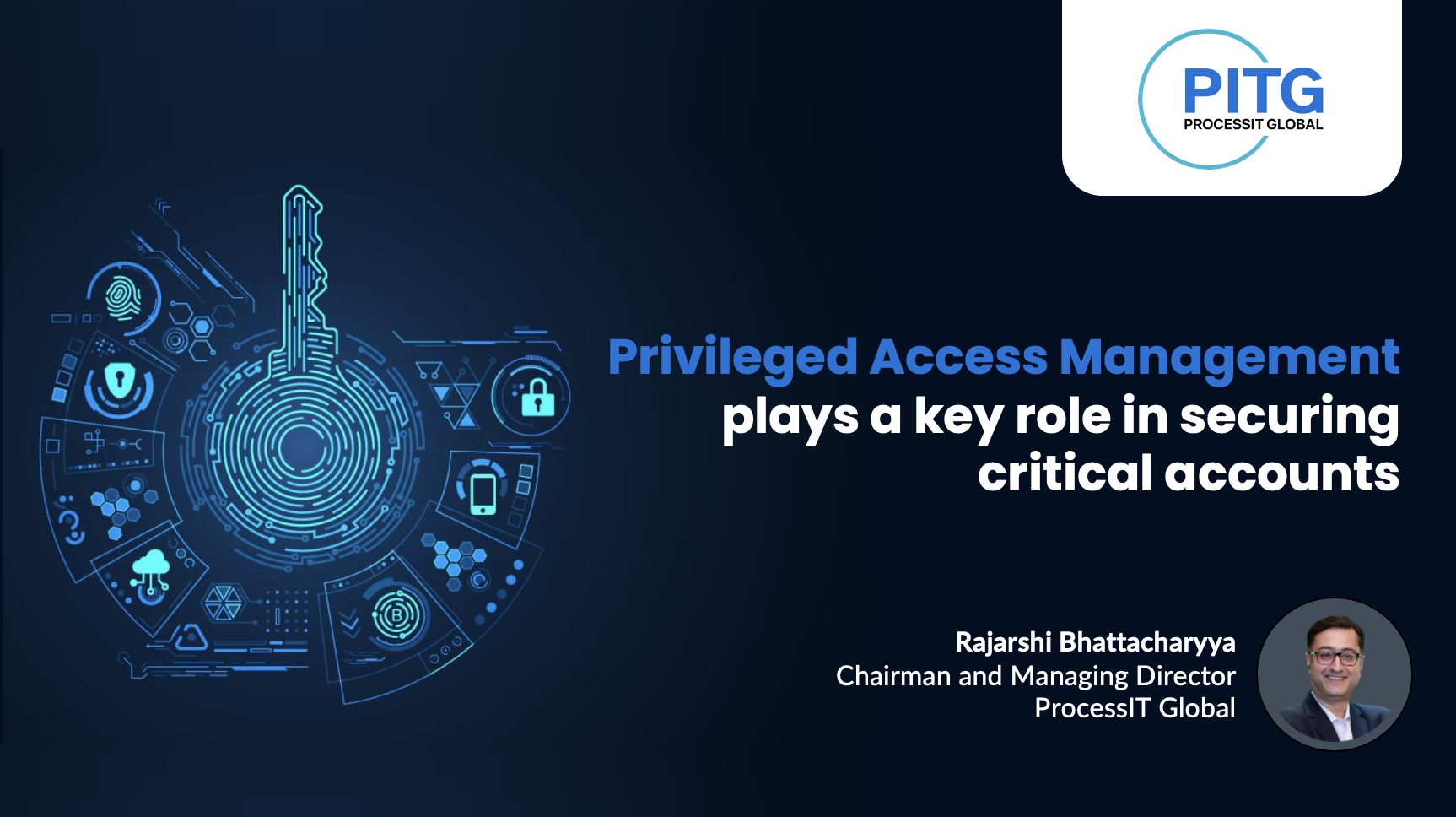Privileged Access Management plays a key role in securing critical accounts - Rajarshi Bhattacharyya, Co-Founder, Chairman and Managing Director, ProcessIT Global

Advanced technologies,
their ongoing evolution, and their adoption by organizations of all sizes are
contributing to the expansion of attack surfaces. On the other hand, cyber threats have also
become more sophisticated and increasing in number targeting organizations of
all sizes – large enterprises and SMEs.
The surge in cybersecurity incidents across industry verticals is mainly
due to the unauthorized access by cybercriminals into the organization’s,
network, data, applications, and devices.
Those organizations operating critical infrastructures must remain constantly vigilant in strengthening their defenses. Several cybersecurity measures are adopted by businesses to secure their digital assets. Among them, Privileged Access Management acts as the keystone in securing critical accounts and protecting the infrastructure.
What is Privileged Access Management?
It is a comprehensive cybersecurity solution designed for controlling, managing, and monitoring access and permissions for users, accounts, processes, and systems across an IT environment. Privileged access accounts leveraged by individuals include Super User Accounts, Local Administrative Accounts, Domain Administrative Accounts, and Active Directory among others. Non-human privileged access accounts include Application accounts, Service Accounts, SSH keys, and more. The PAM strategy comprises people, processes, and technology and is implemented by organizations to safeguard against the threat posed by credential theft and privilege misuse. Privileged Account Management falls under the scope of Identity Access Management (IAM) and helps in reducing cyber risk and achieving high-security ROI. IAM ensures the authentication of identities where the relevant users gain access at the right time. PAM works at a more granular level and is the core of identity security in today’s perimeter-less world.
Privileged accounts help administrators to effectively manage IT environments as these have to be monitored and managed well to avoid becoming a security liability. Privileged access to the wrong user or entity can cause system compromises and data breaches while damaging the reputation of the organization.
Challenges in managing privileged access.
Overcompromising
of privileges
Many a time, IT
administrators provide end-users with a broad set of privileges, and employees
even in new roles will continue to retain old privileges they no longer use.
Having more access than required for their roles certainly leads to a higher
risk of misuse. These excessive
privileges can lead to hackers stealing passwords or installing malicious
codes, leading to accessing data from the specific system and launching an
attack against other networked computers.
Continuous
monitoring and analyzing threats
Some organizations do not have comprehensive threat analysis tools to monitor, detect, and promptly respond to suspicious activities and remediate security incidents. Furthermore, with organizations growing at a fast rate, the IT environments become more complex with numerous systems, devices, and applications. It can be overwhelming to manage privileged access across the vast landscape.
Insider
threats
These cyber risks originate from within the organizations (disgruntled or former employees, vendors, or partners) and pose a potential insider threat as they can abuse their privileged access to steal data and disrupt operations causing further damages related to reputational and financial among others. Sometimes the user's actions can be unintentional too. However, irrespective of the intent, the result is the same. Malicious insiders also have advantages over other external cybercriminals as they are very familiar with the systems, processes, policies, and even vulnerabilities.
IT
Security Audit and Compliance requirements
It can be quite demanding to meet the regulatory compliance and audit requirements for privileged access. Organizations have to ensure they meet privacy and security requirements from numerous laws, regulations, and standards. Failure to comply with them can lead to hefty penalties and reputational damage. Organizations must ensure their PAM practices always align with industry regulations and standards. For organizations knowing which regulations and standards they must adhere to can be a challenge too.
PAM for better cyber security
PAM solutions help to simplify the management of complex IT environments. Its centralized platform monitors, controls, and manages privileged access across the organization’s IT infrastructure. These solutions also support integration with various platforms, applications, and identity management systems. By enforcing the principle of least privilege, PAM solutions provide only the least necessary levels of permissions to users to perform their day-to-day activities, only for the required amount of time. Privileges are revoked once the task is accomplished. Additionally, it is critical to regularly review and update privileges. Tracking monitoring and recording privileged accounts sessions can be effectively done with PAM solutions. With this, any suspicious or unauthorized activities can be detected and responded to in real time. Such unusual patterns in privileged user behavior can be identified by leveraging behavioral analytics and anomaly detection tools. Multi-factor authentication is incorporated in PAM solutions thereby providing an additional layer of security to privileged access. By implementing PAM, organizations can effortlessly meet regulatory and compliance requirements. Privileged activities can be reduced establishing a more audit-friendly environment. Potential fines and legal consequences are avoided as well.
In today’s age where cyberthreats are ever-evolving, PAM serves as a critical tool for organizations to secure critical accounts and IT infrastructure while maintaining a strong security posture. Organizations should also update their PAM strategies and limit privileges for people, processes, and applications, and adapt to the dynamic cybersecurity landscape.


